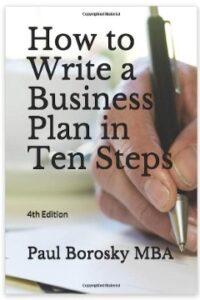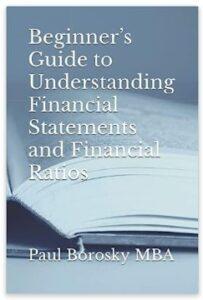How to Write a Hair Salon and Barbershop Business Plan
In recent years, the hair salon and barbershop industry has experienced moderate revenue growth, resulting in an increased demand for hair salon and barbershop business plans, templates, and pro forma financial projections.
This surge in demand can be attributed to several factors. Notably, teenagers and young adults now prioritize personal care and express their individuality through creative hair designs, contributing to the rising popularity of hair salons and barbershops. As a result, this industry's entrepreneurs seek well-structured business plans to capitalize on the growing market. Our hair salon and barbershop business plan writer has devised valuable tips and tricks for business owners and plan writers to address this demand. The business plan should include a comprehensive executive summary, providing an overview of the business's name, location, target market, and unique selling points. A thorough market analysis is crucial to identify the demographics and preferences of potential customers and assess the competition.
A strong marketing and sales strategy is essential to attract and retain clients using social media marketing, local advertising, and customer retention programs. The range of services and prices should be clearly outlined to ensure competitiveness and appeal to the target market.
Furthermore, introducing the management team, key staff members, and their qualifications fosters confidence in the business's capabilities. Pro forma financial projections should be realistic, projecting revenue forecasts, expense estimates, and profit projections for the next few years.
These recommendations enable entrepreneurs to develop a comprehensive and effective business plan, taking advantage of the flourishing hair salon and barbershop industry (7/23).
CHECK OUT OUR HAIR SALON OR BARBERSHOP BUSINESS PLAN TEMPLATES!
Executive Summary for a Hair Salon and Barbershop Business Plan.
The executive summary of a hair salon and barbershop business plan is a concise overview of the entire plan, highlighting key aspects of the business. It should encompass essential segments, such as the company description, industry analysis, marketing strategy, and financial highlights. Our hair salon business plan writer advises emphasizing the organization's core competencies and unique selling points right at the beginning of the executive summary.
For instance, some hair salons adopt a business model, including booth rentals for aestheticians and nail technicians. While hairstyling remains their core service, offering complementary services creates a one-stop shop for customers' personal care needs. By introducing these competitive advantages early in the business plan, owners can capture the attention of potential investors and partners.
The executive summary is a snapshot of the business, providing readers with an insight into the company's strengths and positioning in the industry. It should succinctly convey the organization's mission, target market, competitive analysis, marketing approach, and financial projections.
Business owners should ensure that the executive summary is compelling, convincing, and aligns with the overall tone of the business plan. By crafting an engaging and well-structured executive summary, entrepreneurs increase their chances of garnering stakeholder interest and support.
Need Help Writing a Hair Salon Business Plan?
Call or Text Paul, Doctoral Candidate, MBA.
321-948-9588
Email: Paulb@QualityBusinessPlan.com
Hours of Operation: 7 Days a week, 8 am to 9 pm EST.
Our business plan writer is located in Orlando, FL.
CLICK HERE TO CONTACT US TODAY!!!
Company Information for a Hair Salon and Barbershop Business Plan.
In the company information section of a Hair Salon and Barbershop business plan, it is crucial to address the problem the company aims to solve for its clients. One common issue is personal pride and appearance, as most people take great pride in their appearance. These establishments contribute to their customers' self-confidence and well-being by providing professional hairstyling and barbering services.
The section should also delve into the "Who, what, where, when, why, and hows" of the business and its services. It is essential to outline the target market and the specific services the salon or barbershop will offer. Clear communication of the company's mission, values, and unique selling points is vital in differentiating the business from competitors.
Additionally, discussing the location of the business is crucial in this section. For instance, being located in a busy strip mall with a renowned anchor store like Walmart can provide significant foot traffic and exposure. On the other hand, a standalone location offers the advantage of property ownership, allowing the business owner to benefit from property price growth alongside hair care service revenues.
The information section becomes a valuable tool in presenting a comprehensive and compelling business plan for the Hair Salon and Barbershop industry by thoroughly detailing the company's objectives, target market, and strategic location choice.
Product Description for a Hair Salon and Barbershop Business Plan.
In the product description section of a hair salon or barbershop business plan, it is essential to provide a clear and comprehensive overview of the company's specific services, emphasizing its core competencies. Our barbershop and hair salon business plan writer recommends starting with the primary revenue generator to achieve this. For instance, if the primary source of revenue is haircuts, this should be the first service described in detail.
For barbershops, services like shaves or beard trimming might be the main revenue generator, and these should take precedence in the product description. Once the leading revenue generator is stated and elaborated on, the section should continue with a list of envisioned secondary revenue generators and other services.
Following this structure, readers, including loan officers and investors, will quickly grasp how the business plans to generate revenue and understand the target market the company has selected. This clear presentation allows them to assess the business's profitability and alignment with the selected market, making it easier to make informed decisions regarding funding and investment.
Competitive Advantages for a Hair Salon and Barbershop Business Plan.
Hair salon and barbershop business owners understand the importance of creating and maintaining competitive advantages. One effective way to achieve this is by integrating additional services to complement their core offerings. For instance, our hair salon business plan writer recently developed a plan for a stylist who decided to incorporate Day spa activities into their hair salon. By offering services like infrared skin treatments or teeth whitening, the business expanded its revenue streams while providing customers with the convenience of a one-stop shop.
These strategic moves differentiate the hair salon or barbershop from competitors and demonstrate the business's proactive approach to staying ahead in the market to investors and loan officers. Hair salon and barbershop owners can attract a broader customer base and appeal to individuals seeking comprehensive personal care solutions by showcasing innovative and diverse services. This strategic advantage contributes to the business's growth and success in a highly competitive industry.
Location Description for a Hair Salon and Barbershop Business Plan
The location of a new Hair Salon and Barbershop facility is crucial to the business's success. Our business plan writer recommends selecting a space of approximately 1500 to 2000 square feet for the interior, providing enough room for a welcoming waiting area, a reception desk, hairstyling booths, and a small office area in the back.
Regarding the general location, strip malls have proven advantageous for Hair Salon and Barbershop businesses. Our business plan writer highlights two critical benefits of strip mall locations. Firstly, large chain or anchor stores in strip malls attract significant foot traffic, benefiting smaller shops like hair salons and barbershops with potential new customers. The advertising efforts of anchor stores further contribute to increased visibility for the businesses within the plaza. Secondly, strip malls typically offer ample parking spaces, ensuring convenient access for all guests and visitors. This parking convenience is an added advantage that attracts customers and enhances the overall experience at the Hair Salon and Barbershop facility.
Target Market for a Hair Salon and Barbershop Business Plan.
The target market for a Hair Salon and Barbershop business plan is primarily determined by geography. These establishments strategically open their facilities in strip malls before large subdivisions, apartment complexes, or major highways. This approach ensures convenient accessibility for potential loyal customers, who can easily visit the salon or barbershop while going about their daily routines.
In addition to targeting the local community, another key demographic for Hair Salon and Barbershop owners is seasoned hairstylists with a loyal following. Business owners can benefit in multiple ways by attracting experienced stylists with a dedicated clientele. These independent contractors generate revenue through booth rentals and contribute to product sales at the salon or barbershop, further enhancing the business's profitability and customer base.
Combining these two target markets allows Hair Salon and Barbershop owners to create a steady stream of repeat customers from the local community while capitalizing on the established clientele of skilled hairstylists. This dual approach proves beneficial for building a solid customer base and ensuring the business's sustained growth and success.
Industry Research for a Hair Salon and Barbershop Business Plan.

Industry research for a Hair Salon and Barbershop Business Plan reveals that the main competition lies within the hair and nail salon industry. This sector's revenue is segmented with 45% generated from hair and styling services, 17% from hair coloring and highlighting services, and 15% from nail care services like pedicures and manicures. An additional 7% of industry sales come from merchandise sales, while the remainder is attributed to beauty care products, skin care products and services, and other specialized offerings from individual shops.
Over the past 12 months, the hair salon and barbershop industry has achieved impressive sales of approximately $63 billion. This industry has maintained a steady growth rate of 2.9% annually over the last five years, with industry experts projecting a 2% growth rate for the next five years. Notably, profits generated from the industry have reached approximately $5.9 billion in the past year, with wage payouts amounting to about $27 billion due to the labor-intensive nature of the business.
It is essential to highlight that the hair salon and barbershop industry is highly segmented, with around 1.2 million small businesses competing. As entrepreneurs develop their hair salon and barbershop business plans, this research provides a valuable starting point to understand the industry's dynamics and potential growth opportunities. Properly citing sources is crucial to ensure accuracy and credibility when incorporating this information into the business plan.
Owner and Management Section of a Hair Salon and Barbershop Business Plan
The owner and Management Section of a Hair Salon and Barbershop Business Plan should address the unique nature of owning and managing such a business. Unlike many other organizations, hair salon and barbershop owners often play a dual role as both business owners and working employees. The business owner offers clients haircuts, hairstyles, and shavings in this context. This dual responsibility requires careful balance and efficient time management.
Within the Hair Salon and Barbershop business plan, it is crucial to outline how the owner's responsibilities will be divided between managing the business and providing services. This section should include a comprehensive overview of the owner's qualifications, including their experience in the hair and grooming industry, relevant certifications, and ability to effectively manage the salon or barbershop's daily operations.
Additionally, the management section should outline any critical members of the management team, such as salon managers or supervisors, and their respective roles and responsibilities. Clear organizational charts and job descriptions can help demonstrate a well-structured management team and ensure smooth operations.
As a Hair Salon and Barbershop business involving entrepreneurship and hands-on service provision, this section should emphasize the owner's commitment to delivering exceptional customer experiences and maintaining the salon's reputation for high-quality services. It should also highlight any unique skills or expertise that set the owner and management team apart from competitors in the industry.
Ultimately, the Owner and Management section of the Hair Salon and Barbershop Business Plan should showcase the owner's ability to successfully lead the business while also providing top-notch grooming services to clients, fostering a positive and thriving salon environment.
Funding Request for a Hair Salon and Barbershop Business Plan
The Funding Request section of the Hair Salon and Barbershop Business Plan outlines the financial requirements for starting and operating the business. To successfully establish and run a hair salon and barbershop, substantial funding is necessary to cover various startup expenses.

The primary funding requirement for a hair salon and barbershop business plan is the buildout of the retail space. This involves hiring contractors for drywall and flooring and installing shelves for storing hair, skin, and cosmetics. Additionally, purchasing essential equipment such as salon chairs, waiting area chairs, and small desk/mirror combos is vital to creating a comfortable and attractive environment for clients. The reception area, complete with a computer and other necessary technology, must also be designed and built to manage bookings and customer information efficiently.
In addition to the initial setup costs, funds will be needed to cover ongoing operational expenses, including inventory restocking, utility bills, marketing, and payroll for salon staff. These expenses ensure smooth day-to-day operations and maintain the salon's reputation for providing high-quality services.
Our research indicates that the startup costs for a hair salon and barbershop typically range from $75,000 to $150,000. The actual funding requirement will depend on factors such as the salon's size, location, and level of sophistication in services and interior design.
To secure the necessary funding, the business plan should include a detailed breakdown of the startup costs, projected operational expenses, and a well-thought-out financial model showcasing revenue projections and expected profitability. This financial model will demonstrate to potential investors or lenders the feasibility and potential return on investment for the hair salon and barbershop business.
Overall, the Funding Request section should highlight the substantial capital needed to establish and grow the hair salon and barbershop, emphasizing the business owner's dedication to providing an exceptional customer experience and building a successful and profitable venture.
Pro Forma Financials for a Hair Salon and Barbershop Business Plan.
Pro Forma Financials for a Hair Salon and Barbershop Business Plan involve projecting the expected financial performance of the business based on critical assumptions and revenue drivers. To start, estimate the number of customers your hair salon and barbershop stylists will serve on an average daily basis. Consider factors such as the salon's capacity, stylists' productivity, and the demand for services in the target market.

Next, determine the average price for hair styling and cutting services. This can be based on market research and competitor analysis to ensure your pricing is competitive yet profitable. Additionally, estimate the daily sales of hair care products and other cosmetic products you expect to generate. These can be offered as add-on sales to customers during their salon visits.
Once you have the daily projections for customer visits and sales, multiply them by 30 to obtain your monthly revenue-generating expectations. This will give you a rough estimate of your monthly sales revenue. To calculate profitability, deduct the monthly costs, including labor (salaries for stylists and other staff), rent, utilities, supplies, and other operating expenses, from your projected revenue. This will give you an idea of your potential net income.
It is essential to be realistic and conservative in your financial projections, considering seasonality, market fluctuations, and other potential challenges that may impact your business's performance. A well-prepared financial model should also include a cash flow projection, which outlines the expected inflows and outflows of cash over time. This will help you understand the cash flow patterns and ensure you have sufficient funds to cover expenses when they arise.
Furthermore, conducting sensitivity analyses by testing different scenarios based on variations in sales, pricing, or costs can provide valuable insights into the business's financial resilience and potential risks. By developing comprehensive pro forma financials, you will be better equipped to make informed decisions, attract potential investors or lenders, and plan for the financial success and growth of your hair salon and barbershop business.
Hopefully, these insightful tips and tricks for writing a business plan were helpful. Email or call us if you need help with a business plan or financial projections.
Author: Paul Borosky, Doctoral Candidate, MBA., Author
Owner of: Quality Business Plan, Quality Business Consultant.
Date: 7/2023